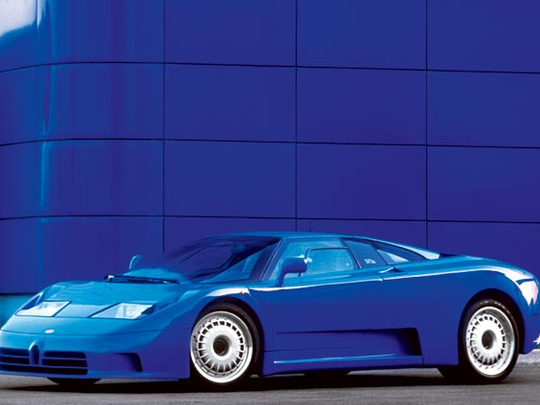
In the automobile world, a storied heritage alone will not guarantee survival, let alone success. No other historic brand would have seen the kind of ups and downs that French carmaker Bugatti had in its more than a century long existence. Despite some brilliant examples of automotive genius over the decades, the marque struggled to recover from financial casualties and was on the verge of slipping into oblivion, before Volkswagen AG came in with a long rope and the almighty Veyron.
Although the Veyron’s overwhelming success eclipsed all the other models that the brand had produced over the years, there’s one that stands out for its sheer engineering brilliance and performance that was way ahead of its time. It’s the Bugatti EB110, which was the most significant attempt before the Veyron at reviving the ailing brand. Although it failed in bringing any kind of financial relief to the company, the technological marvel succeeded in keeping the name alive until the German behemoth took over the reins.
The EB110 was born shortly after Italian billionaire Romano Artioli bought the rights to the Bugatti name in the Eighties. A long-time Ferrari dealer, Artioli wanted to make a car that was more advanced than any Ferrari or Lamborghini to mark Ettore Bugatti’s 110th birthday in 1991. To this end, he sourced the best talents available in Italy including former Lamborghini engineers. The design was penned by none other than the great Marcello Gandini who at that time was at the peak of his career having done the Lamborghini Miura and the Countach. Work started on the prestigious project as early as 1987, just as Artioli wanted it, everything about the car was superlative. Tyres were custom Michelins while the engine was lubricated by oil specially developed by Elf. The engine, developed by Paolo Stanzani, had four IHI Turbochargers and five valves per cylinder, and was mated to a six-speed transmission and an all-wheel drive system with three differentials. The EB110‘s body was made entirely from lightweight aluminium panels, which were mounted on a carbon fibre monocoque chassis, specially built by French aviation company Aerospatiale. Incidentally, the EB110GT was the first car ever to feature a carbon fibre monocoque chassis.
All this was wrapped in the sexy and timeless exterior which also incorporated Gandini’s celebrated flip-up doors from the Countach. After its launch in Paris in 1991, the Bugatti EB110 GT underwent official acceleration and performance tests and was homologated at a speed of 342kph, which was a world record for a production road car at the time.
Only 139 units were built until 1995, when production ceased, and out of this around 30 were built to SS specification. That means, even if you’re lucky to see someone willing to sell their EB110 – Schumacher sold his in 2010, by the way – you’re looking at shelling out anything in the range of Dh1 million to 1.5 million. But what that will buy you is a classic that can still hold its own against some modern day supercars.











